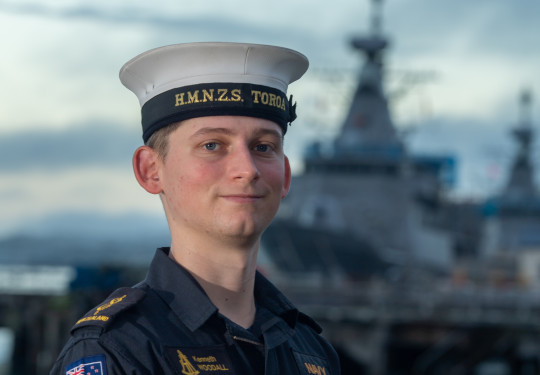Navy skills provide springboard to professional degree
Military skills can support a pathway to a university education.
02 May, 2023
Being taught surveying skills while a hydrographer in the Navy inspired Able Hydrographic Systems Operator (AHSO) Kenneth Woodall towards a career in land surveying.
AHSO Woodall left regular forces to undertake a Bachelor of Surveying at Otago University. He opted to stay on as a Reserve Forces sailor, basing himself with Reserve Unit HMNZS Toroa in Dunedin.
Now in his third year of a four-year degree, AHSO Woodall says his three years of trade training in hydrographic surveying was a plus in applying for the course. The BSurv degree has limited enrolment numbers from the second year.
Navy hydrographers help create accurate seabed and coastline charts for navigational and military purposes, as well as operating the Navy’s Autonomous Underwater Vehicles and Remotely Operated Vehicles.
“I didn’t know what surveying was when I joined the Navy,” he says. “I found it pretty interesting and it inspired me to do it more professionally. But I wanted to stay connected with the Navy.”
He’s not the only one; at the start of the surveying course he discovered another Navy hydrographer colleague with the same career plan as him.
He says his reserve obligations are 20 training days a year, which can including parade nights at Toroa. “You can fit in around your schedule. If you’re under the pump at university, you don’t have to put your hand up.”
He stays connected because he would like to remain open to the possibility of deployments. He recently attended ‘ReserveX’, a week of Reserve Force training at Devonport Naval Base. He said it was great to get back up to Devonport and build resilience by getting back into military activities.
Toroa is an active reserve unit and very supportive, he says. “They’re always keen to get out and get involved.”
